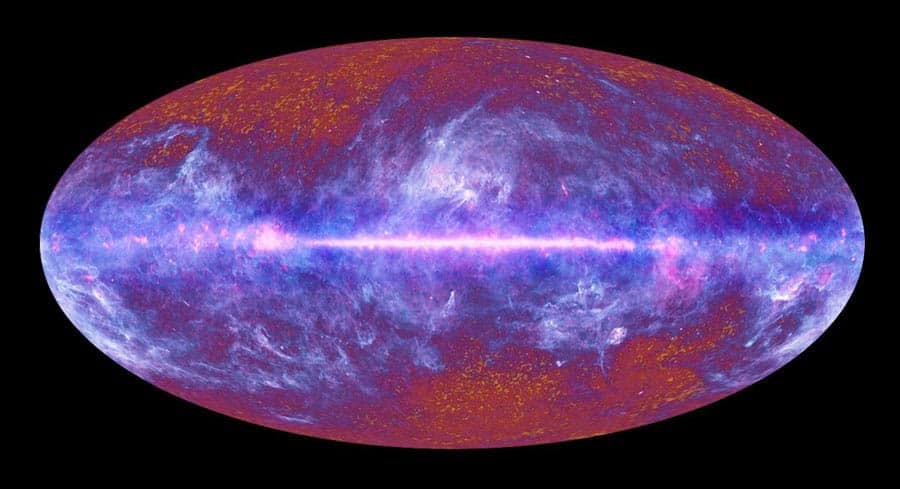## Level Up Your Doomscrolling: The Universe Might Be Ending Way Sooner Than You Think!
Heads up, gamers! Those epic save-the-world quests you’re conquering might be a lot more real than you think. A recent study by Physics World throws a curveball into our cosmic understanding, suggesting that the universe’s big finale could be happening… well, sooner than we’d like to admit. We’re talking about the ultimate “Game Over” screen, but for everything. Buckle up, because we’re diving deep into the mind-bending theories that could rewrite the ending to our cosmic story.

Weakening Dark Energy: A Possible Big Crunch?

Recent research published by Gamestanza suggests that the universe might not be expanding forever. Scientists have long theorized that dark energy, a mysterious force comprising nearly 70% of the universe, is responsible for the accelerating expansion. However, new data indicates that dark energy might be weakening. This discovery could lead to a dramatic reversal in the universe’s fate, culminating in a “Big Crunch,” where the expansion halts, and the universe collapses upon itself.
This theory, if proven correct, would significantly impact our understanding of cosmology. If dark energy remains constant, as initially proposed by Albert Einstein, the universe will continue to expand indefinitely, gradually cooling and becoming increasingly sparse. However, if dark energy diminishes with time, the expansion will slow, eventually stop, and then reverse, leading to a gravitational collapse of all matter.
“The possibility that everything comes to an end is now on the table,” says cosmologist Mustapha Ishak-Boushaki of the University of Texas at Dallas. “Would we consider that a good or bad thing? I don’t know.”
This finding comes at a time when several ambitious projects are underway to study dark energy in greater detail. The European Space Agency’s Euclid mission, launched in 2023, is equipped with a powerful telescope to map the distribution of galaxies and shed light on the nature of dark energy. Additionally, the Vera C. Rubin Observatory in Chile, set for completion in the coming years, will conduct an unprecedented survey of the night sky, capturing vast amounts of data that could provide further insights into the behavior of dark energy.
Future Telescopes: Peering into the Cosmic Mystery
The quest to unravel the mysteries of dark energy and the fate of the universe relies heavily on advancements in observational astronomy. Future telescopes promise to be instrumental in this endeavor, offering unprecedented views of the cosmos and pushing the boundaries of our understanding.
The Euclid mission, a collaborative effort between the European Space Agency and various international partners, is a prime example of this progress. Equipped with a large, highly sensitive mirror and advanced imaging instruments, Euclid will conduct a comprehensive survey of billions of galaxies, mapping their distribution and movements across vast cosmic distances. By analyzing the subtle distortions in the light from distant galaxies, known as gravitational lensing, Euclid aims to precisely measure the expansion history of the universe and constrain the properties of dark energy.
The Vera C. Rubin Observatory, named after the pioneering astronomer who revolutionized our understanding of dark matter, will be another game-changer in the field of cosmology. This ambitious project, located in the Atacama Desert of Chile, will boast the world’s largest digital camera, capable of capturing images of the entire Southern Hemisphere sky every few nights. This unprecedented data deluge will allow astronomers to study the evolution of galaxies, the distribution of dark matter, and the behavior of transient objects like supernovae with unprecedented detail. The observatory’s data will also be invaluable for studying dark energy, as it will allow astronomers to track the changing distribution of galaxies over time, providing critical clues about the nature of this enigmatic force.
Multiverse Mayhem: Could Another Universe Be Crashing into Ours?
String Theory and Inflation: Seeds of the Multiverse
The concept of a multiverse—the existence of multiple universes beyond our own—has captivated the imaginations of scientists and the public alike. While still highly speculative, the idea stems from two prominent theoretical frameworks in physics: string theory and inflation theory.
String theory, which attempts to reconcile quantum mechanics with gravity, proposes that the fundamental building blocks of the universe are not point-like particles but tiny, vibrating strings. These strings can vibrate in different modes, giving rise to the various particles and forces we observe. One implication of string theory is the existence of extra spatial dimensions, beyond the three we experience. These extra dimensions could be curled up at incredibly small scales, leading to the possibility of other universes existing in these hidden dimensions.
Inflation theory, on the other hand, addresses the rapid expansion of the universe in the first fraction of a second after the Big Bang. While it successfully explains why the universe appears so uniform on large scales, it leaves unanswered questions about what triggered this inflation and what stopped it. Some physicists believe that inflation may have occurred not just once but repeatedly in different regions of spacetime, giving rise to a multitude of bubble universes, each with its own unique set of physical laws and constants.
Cosmic Wake: Evidence of a Multiversal Collision?
While the existence of a multiverse remains unproven, some scientists believe they have found tantalizing clues in the cosmic microwave background (CMB), the faint afterglow of the Big Bang. The CMB is a nearly uniform radiation field that permeates the entire observable universe. Tiny fluctuations in this radiation pattern provide valuable information about the early universe.
A team of physicists led by Kris Sigurdson of the University of British Columbia in Vancouver has proposed that a collision between our universe and another bubble universe could leave a detectable “wake” in the CMB. This wake would manifest as a distinctive pattern of polarized light, characterized by two closely spaced rings where the photons oscillate in a predominantly single plane.
According to Sigurdson and his colleagues, the collision would have occurred before the period of inflation, erasing any other evidence. However, the wake would have been imprinted onto the CMB during its formation, around 380,000 years after the Big Bang. The researchers have calculated the specific features of this wake and argued that it could be distinguished from other cosmic phenomena.
Testing the Multiverse: Can We See the Evidence?
The prediction of a cosmic wake from a multiversal collision offers a tantalizing opportunity to test the existence of multiple universes. However, confirming this hypothesis requires careful analysis of the CMB data using advanced computational techniques.
The Planck satellite, which completed its mission in 2013, provided the most detailed map of the CMB to date. However, the proposed wake signal is subtle and may require even more precise measurements to detect. Future space telescopes, such as the Simons Observatory and the CMB-S4, are being designed specifically to study the CMB with unprecedented accuracy. These missions will be crucial in determining whether the evidence for a multiversal collision exists.
The quest to unravel the mysteries of the multiverse is one of the most exciting frontiers in modern physics. If confirmed, the existence of multiple universes would revolutionize our understanding of the cosmos, raising profound philosophical questions about our place in the grand scheme of things.
Conclusion
So, there you have it. The universe, that vast, ever-expanding tapestry of stars and galaxies, might be nearing its end sooner than we previously thought. This isn’t just some science fiction doomsday scenario, but a serious proposition backed by recent theoretical models. The very fabric of spacetime, the stage upon which our cosmic drama unfolds, could be fragile, susceptible to a sudden and catastrophic collapse.
This revelation throws into sharp relief the ephemeral nature of existence itself. We, as inhabitants of this grand cosmic stage, find ourselves facing a finite timeline, a cosmic countdown clock. It compels us to consider our place in the universe, our legacy, and the value of every fleeting moment. Will humanity rise to the occasion and leave its mark on the cosmic history books before the curtain falls? Or will we fall victim to our own shortsightedness, failing to grasp the urgency of our situation? The answer, dear readers, lies not in the hands of theoretical physicists, but in the choices we make today.
The universe may be on borrowed time, but our time is now. Let us make it count.